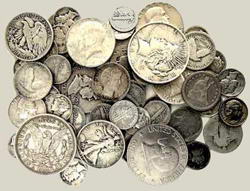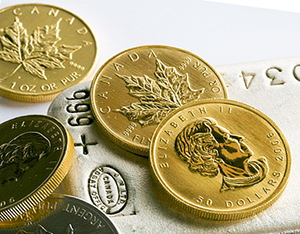A coin is a piece of hard material that is standardized in weight, is produced in large quantities in order to facilitate trade, and primarily can be used as a legal tender token for commerce in the designated country, region, or territory.
 Coins are usually metal or a metallic material and sometimes made of synthetic materials, usually in the shape of a disc, and most often issued by a government. Coins are used as a form of money in transactions of various kinds, from the everyday circulation coins to the storage of large numbers of bullion coins. In the present day, coins and banknotes make up the cash forms of all modern money systems. Coins made for paying bills and general monetized use are usually used for lower-valued units, and banknotes for the higher values; also, in most money systems, the highest value coin made for circulation is worth less than the lowest-value note. The face value of circulation coins is usually higher than the gross value of the metal used in making them, but this is not generally the case with historical circulation coins made of precious metals.
Coins are usually metal or a metallic material and sometimes made of synthetic materials, usually in the shape of a disc, and most often issued by a government. Coins are used as a form of money in transactions of various kinds, from the everyday circulation coins to the storage of large numbers of bullion coins. In the present day, coins and banknotes make up the cash forms of all modern money systems. Coins made for paying bills and general monetized use are usually used for lower-valued units, and banknotes for the higher values; also, in most money systems, the highest value coin made for circulation is worth less than the lowest-value note. The face value of circulation coins is usually higher than the gross value of the metal used in making them, but this is not generally the case with historical circulation coins made of precious metals.
Bullion coins
 Exceptions to the rule of coin face-value being higher than content value, also occur for some "bullion coins" made of silver or gold (and, rarely, other metals, such as platinum or palladium), intended for collectors or investors in precious metals. Examples of modern gold collector/investor coins include the American Gold Eagle minted by the United States, the Canadian Gold Maple Leaf minted by Canada, and the Krugerrand, minted by South Africa. The American Gold Eagle has a face value of US$50, and the Canadian Gold Maple Leaf coins also have nominal (purely symbolic) face values (e.g., C$50 for 1 oz.); but the Krugerrand does not.
Exceptions to the rule of coin face-value being higher than content value, also occur for some "bullion coins" made of silver or gold (and, rarely, other metals, such as platinum or palladium), intended for collectors or investors in precious metals. Examples of modern gold collector/investor coins include the American Gold Eagle minted by the United States, the Canadian Gold Maple Leaf minted by Canada, and the Krugerrand, minted by South Africa. The American Gold Eagle has a face value of US$50, and the Canadian Gold Maple Leaf coins also have nominal (purely symbolic) face values (e.g., C$50 for 1 oz.); but the Krugerrand does not.
Historically, a great number of coinage metals (including alloys) and other materials have been used practically, artistically, and experimentally in the production of coins for circulation, collection, and metal investment, where bullion coins often serve as more convenient stores of assured metal quantity and purity than other bullion.
Coins have long been linked to the concept of money, as reflected by the fact that in other languages the words "coin" and "currency" are synonymous. Fictional currencies may also bear the name coin.
Bi-metallic coins
Bi-metallic coins are coins consisting of more than one metal or alloy, generally arranged with an outer ring around a contrasting center. Common circulating examples include the €1, €2, British £2, Canadian $2, South African R5, and Turkish lira.
Bi-metallic coins have been issued for a long time, with examples known dating from the 1600s, while the Roman Empire issued special occasion, large medallions with a center of bronze or copper and an outer ring of orichalcum, starting with the reign of Hadrian. The silver-center cent pattern produced by the United States in 1792 is another example. In recent times, the first circulating bi-metallic coin was the 500 Italian lire, first issued in 1982. France, with a 10 franc coin and Thailand, with a 10 baht, issued bi-metallic coins for circiraulation in 1988. India has released 10 Rupee bimetallic coins in 2009 that contains dateline of 2006 (minted at Noida) As well as circulating coins, where they are generally restricted to high denomination coins, bi-metallic coins are often used in commemorative issues, they are used as a way of securing against coin counterfeiting.The manufacturing process is similar to that of ordinary coins, except that two blanks (the inner and the outer) are struck at the same time, deforming the separate blanks sufficiently to hold them together. Global banknotes and coins have the most exclusive inventory, the most extensive one providing the absolute finest US and World Paper Money and Coins shipping world wide at incredibly and uniquely Wholesale prices, designed to increase your business as a Dealer or your value as a Collector.